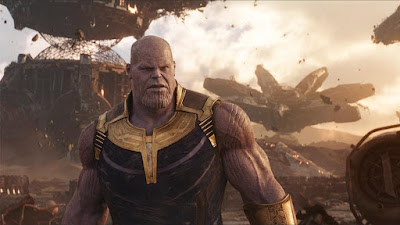 |
| Image from MovieWeb |
Amazon affiliate links are used on this site.
Most of us are familiar with the concept of story arcs as applied to books and TV series. A story arc is a plot device which over-arches a set of individual stories within the series, which all the stories will either contribute to or will have small side-scenes or events that do so. In my mind, it’s distinct from the ongoing plot of episodic series where each episode furthers a story but does not conclude within the time of said episode. So, for example, Lord of the Rings has a plot that drives the series (about the One Ring), a few sub-plots, but no resolution at the end of the individual three books. Compare this to the Mistborn trilogy by Brandon Sanderson, or the Malazan Book of the Fallen by Steven Erikson where each book can stand alone, but events contribute to a larger story arc. Indeed, Harry Potter can be seen as the story arc leading to Harry’s ultimate battle with Voldemort.
In television series, the story arc is commonly used to allow individual episodes to be their own tales but to build up a larger plot usually towards a season finale. The writers of the modern sci-fi series Doctor Who embraced this concept, and this was a marked contrast to the older seasons before its rebirth. For example, the whole of season one had references towards a ‘Bad Wolf’ which ultimately turned out to be Dr Who’s sentient spacecraft warning him about the Dalek trap in the season finale. Other examples would include the UK version of Life on Mars, and Ashes to Ashes; Buffy the Vampire Slayer; Firefly, and pretty much any soap opera on the TV (would that make the series that I love ‘space opera?’). I read somewhere that Hill Street Blues was one of the first series to have story arcs, and oddly I do recall loving that about the programme—the way little nuggets of the plot would pop up in the episodes and then magically coalesce into a major plot event later in the season. St Elsewhere, another childhood favourite of mine, did exactly the same.
 |
| Image from TV Tropes |
For me, in comics, the masters of the story arcs were Chris Claremont and Jon Byrne whose work on the Uncanny X-men in the early eighties established the popularity of the mutant team. Each issue had its story, occasionally drifting into a two or three parter, but with little plot nuggets that set up a larger plot arc. The Dark Phoenix story represents the best example of that—we had a slow build up with Jean Grey being re-born as Phoenix, little episodes where we learned more of her power, and then strange time-slips where she became drawn in by the Hellfire Club, and finally the finale where she loses the plot and becomes Dark Phoenix, ultimately ending in tragedy. The X-men films tried to follow this, and probably will try again, but the shorter culmination of the plotlines that they follow and the convoluted continuity of the films just haven’t worked for me.
 |
| Image from io9 |
The end of Avengers gave us the first glimpse of Thanos, a name and image that would crop up through Phase Two and Phase Three of the MCU movies, latterly with the (sometimes contrived) appearances of the Infinity Stones. These six stones will form the key plot device for the Avengers 3 film, having featured now in Captain America, Avengers, Guardians of the Galaxy, Thor and Dr Strange. Originally seen in the comics as the Soul Stones and hunted by Thanos since the 1970s, they were part of a major ‘event’ when linked to the Infinity Gauntlet, which we now know Thanos has popped on in anger at the end of Avengers 2. As an aside, we know five of the stones have featured thus far, but the location of number six… the soul stone… is still a mystery (well, until Friday).
 |
| Image from Variety. |
To be continued as they say in the comics!
Ross M. Kitson is a doctor, occasional blogger, full-time geek, and sporadic author of fantasy and YA sci-fi. Connect with Ross on Twitter.
Get even more book news in your inbox, sign up today! Girl Who Reads is an Amazon advertising affiliate; a small commission is earned when purchases are made at Amazon using any Amazon links on this site. Thank you for supporting Girl Who Reads.


















0 comments:
Post a Comment